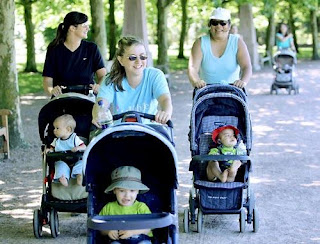I came up to Seattle last year to join City Year, an Americorps group that is working to address the dropout crisis in our public schools. It’s a great organization but, like any group of people working together, participants found things to complain about. The two biggest gripes? The uniform and PT.
And yeah, it’s a little annoying to wear a bright red jacket and khaki pants wherever you go. That goes without saying. But what’s PT, you ask? Here, check it out:
Or here.
Short for Physical Training, City Year HQ defines it thusly:
“One of City Year’s signature activities is Physical Training, commonly called “PT.” It is the signature exercise of City Year, a demonstration of large-scale, consistent, and systematic civic engagement. PT is performed at all City Year events- from annual dinners to service projects, and always at Unity Rally- and often used as a power tool to exhibit City Year’s spirit, discipline, purpose and pride.”
-The Idealist Handbook, 2009-2010
To break that statement down, essentially Corps Members do PT to get excited about service and get others excited about what they’re doing. The organization has been around for awhile so they obviously have had success with it, but why? Why would a series of exercises performed in unison get people energized?
 |
| Everyone looks like this when exercising, right? Credit |
If you think about it, though, City Year is hardly the first group to do this. High Schools, churches, sports teams, armies, and community organizations all routinely take part in activities that encourage participants to act together in synchronicity. They march, chant, sing, and dance in time together, combining body and voices together in unison in a way that happens so often in society we seldom notice it any more. Even Wal-Mart has version of it:
But why?
In 2008 Scott S. Wiltermuth and Chip Heath published the results of study that sought to answer that question. Called “Synchrony and Cooperation” the researchers studied whether or not people who engaged in synchronous activity acted any differently afterwards.
 |
| Afterwards the babies still refused to look each other in the eyes Credit Laura Morton |
What they found was that people who performed activities in synchronicity with others (such as walking in lockstep) were more likely to report feeling connected with other group members. But more than that, when researchers tested that feeling through a game that placed individual self-interest against the collective good participants who had taken part in the activities were much more likely to engage in self-sacrificial behavior. And they kept sacrificing individual profits for group generosity for the entire length of the experiments.
“We suggest that acting in synchrony with others can foster cooperation within groups by strengthening group cohesion. If true, our hypothesis may explain the widespread presence of cultural rituals involving synchrony: Such rituals may have evolved as partial solutions to the free-rider problem, the tendency for some individuals to shoulder less than their share of the burden of producing public goods and participating in collective action.”
 |
| The coffee obviously isn’t working Credit |
What was really interesting, though, was that when participants were asked how they felt they didn’t report feeling any happier than the control group. This means that they weren’t acting more altruistic because they liked what they were doing; it wasn’t fun. But just the act of performing synchronous activity strengthened the bonds between participants.
Some other studies suggest that it might not just be the performers who benefit from an activity. A paper published in the Proceedings of the National Academy of Sciences in 2011 found that the audience felt more connected just by watching a ritual. Whether or not watching synchronous activity has the same effect as taking part hasn’t really been studied, but watch the following video and tell me you don’t tear up a little.
So next time you’re somewhere you’re encouraged to do a song and dance in the interest of “team building” you’ll know the reason why. They’re just trying to make you a little less of a dick.
